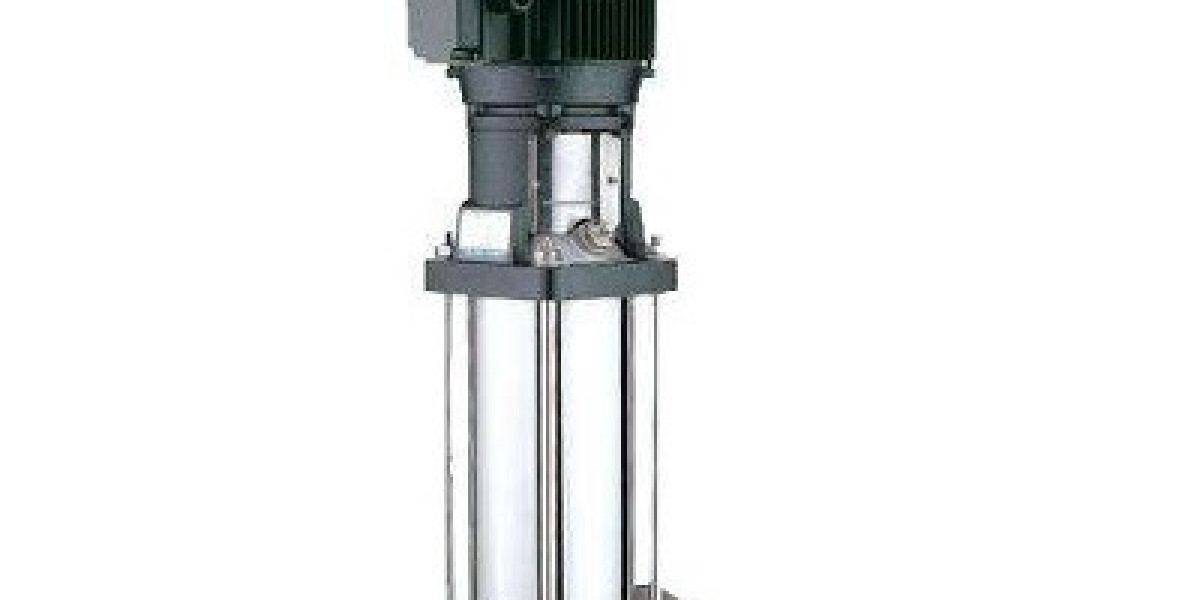Every building, factory, and processing plant needs a reliable pumping system to move water and fluids where they are required. Among the many types of pumps available, the vertical multistage pump has become one of the most trusted choices. With its ability to deliver high pressure, save space, and run efficiently, it has become an essential solution for modern industries.
In this blog, we will explore what a vertical multistage pump is, how it works, its benefits, and why it is used so widely across industries.
Introduction to Vertical Multistage Pumps
A vertical multistage pump is a centrifugal pump with multiple impellers placed on a vertical shaft. Each impeller stage increases the pressure of the liquid before passing it on to the next stage. By the time the fluid leaves the pump, it has reached the desired high pressure required for the system.
This design makes the pump compact, powerful, and capable of handling high-pressure requirements, all while occupying less space compared to horizontal pumps.
Key Design Elements
The construction of a vertical multistage pump is carefully engineered for performance and durability. Its design includes:
Motor: Located at the top, driving the shaft and impellers.
Vertical Shaft: Connects the impellers with the motor, ensuring smooth energy transfer.
Impellers (Stages): Multiple impellers that progressively increase liquid pressure.
Pump Casing: Protects the internal components and directs the fluid.
Seals and Bearings: Provide leak protection and reduce friction during operation.
Most modern pumps are built with stainless steel or durable alloys to handle corrosion and wear in industrial environments.
How Vertical Multistage Pumps Work
The working principle is simple yet highly effective.
Liquid enters the pump at the bottom through the suction port.
The rotating impellers, driven by the motor, push the fluid forward.
Each impeller stage increases the pressure before sending the liquid to the next stage.
The fluid exits at the top of the pump with the required high pressure.
Because of this staged pressure increase, vertical multistage pumps are ideal for applications where steady, high-pressure flow is needed.
Features of Vertical Multistage Pumps
Some distinct features of these pumps include:
High efficiency with low energy consumption
Compact vertical design for limited floor space
Durability with stainless steel or cast iron construction
Low noise and vibration during operation
Capability to handle high pressure consistently
Corrosion resistance for handling aggressive fluids
Benefits of Vertical Multistage Pumps
Choosing a vertical multistage pump provides industries with several advantages:
Space-Saving Solution: Vertical orientation reduces the footprint.
Stable Water Pressure: Essential for high-rise buildings and industrial processes.
Energy Efficiency: Lowers electricity costs over long-term use.
Versatility: Suitable for clean water, chemicals, oils, and other fluids.
Reliability: Strong design ensures long operating life.
Low Maintenance Costs: Less frequent servicing compared to conventional pumps.
Where Are Vertical Multistage Pumps Used?
The wide application range of these pumps shows their importance in various sectors:
Municipal Water Supply: Ensures reliable distribution of water to households and industries.
Pressure Boosting in Buildings: Provides steady water flow to high-rise apartments, hotels, and hospitals.
Boiler Feed Systems: Supplies high-pressure water to boilers in factories and power plants.
Irrigation Systems: Supports farmers by delivering pressurized water for crop irrigation.
HVAC Systems: Maintains fluid circulation in heating and cooling applications.
Desalination Plants: Used in reverse osmosis systems to produce fresh water.
Industrial Processing: Pumps chemicals, food-grade fluids, and pharmaceuticals.
Mining and Oil Industry: Transfers fluids under demanding conditions with reliability.
Maintenance Best Practices
Like any mechanical system, vertical multistage pumps require care to perform well over the long term. Here are essential maintenance practices:
Inspect Seals and Bearings: Prevent leaks and ensure smooth functioning.
Lubricate Bearings: Regular lubrication reduces friction and wear.
Check Alignment: Proper alignment between the motor and shaft avoids vibration issues.
Clean Impellers: Prevents blockages that affect performance.
Monitor Performance: Regularly measure flow rate and pressure.
Preventive maintenance not only increases service life but also reduces costly downtime.
Why Industries Prefer Vertical Multistage Pumps
Compared to other pump types, vertical multistage pumps deliver unmatched efficiency and performance. They are especially valued because they:
Handle high-pressure requirements without bulky equipment.
Fit easily in space-limited facilities due to their vertical layout.
Provide long-term cost savings through energy efficiency.
Are adaptable to a wide range of industries and fluids.
Latest Innovations and Future Trends
The pumping industry continues to evolve, and vertical multistage pumps are no exception. Some modern innovations include:
IoT-enabled pumps: Allow real-time performance tracking and predictive maintenance.
High-efficiency motors: IE3 and IE4 motors reduce energy consumption.
Sustainable materials: Pumps designed with eco-friendly alloys and coatings.
Automated controls: Pumps that adjust automatically to system demand.
These improvements ensure that vertical multistage pumps remain future-ready and more efficient than ever.
Conclusion
The vertical multistage pump has become a trusted choice in industries, commercial complexes, and municipal systems. With its ability to handle high pressures, save installation space, and operate efficiently, it provides unmatched value to users.













